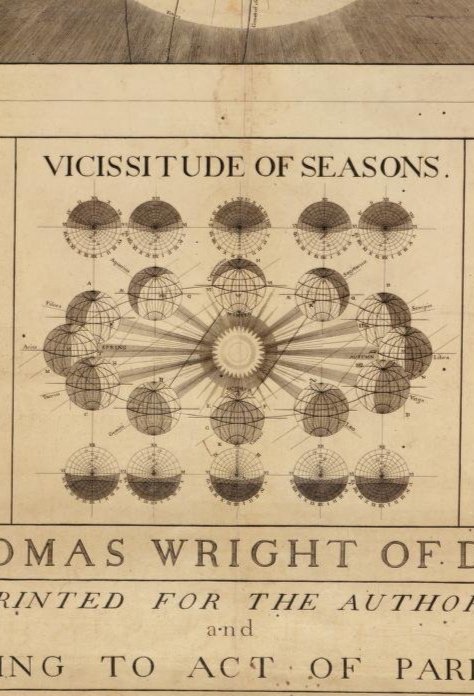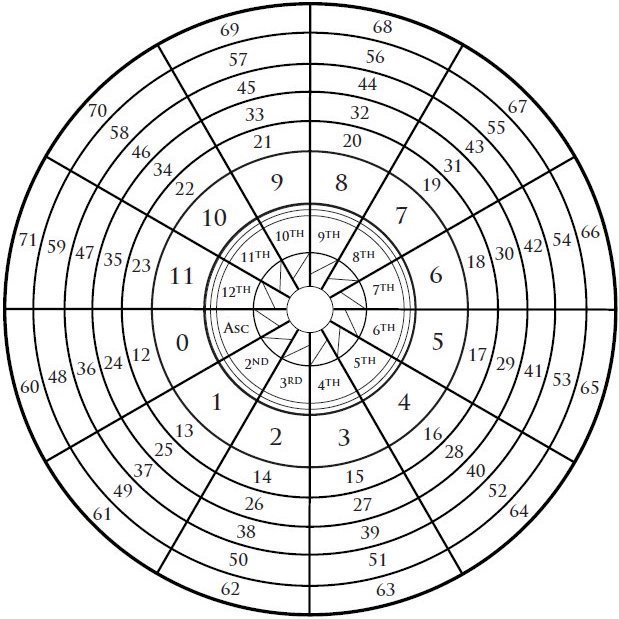Astrological Techniques
-
Horary is a traditional form of astrology where a chart is cast to answer a question. Questions can be about relationships and contracts, missing things and pets, identifying unknown persons, career matters, legal matters, conflict, trials, investment, property and financial matters, illness and health, and pregnancy and fertility.
Send me an email explaining the issue, the circumstances of your question, and what your question is (e.g., will this relationship work out, will I get the job, where is my lost dog, should I buy this house, etc.). I will let you know if the question is appropriate for horary, if I feel capable and confident in taking on your question, and any additional detail I need to fully understand the issue.
What I would need from you:
An honest, radical question with openness to receive an answer that carries intention. This means the question is meaningful, soul-driven, conveying a purpose, and asked with proper intention. If what the answer is has no impact on you or it is about a matter that has no real underlying concern or importance, it is not an appropriate question for horary.
As the astrologer, I will provide my full commitment and engagement to the chart.
We will arrange a meeting for a consult and go over what the astrology chart is saying. Horary gives information to allow people to better make choices. Horary does not deny free will, but rather enhances it (i.e., I can advise you as to what will happen and the dynamics of the situation, but what you do is ultimately your choice).
-
Asteroids were not traditionally used in astrology because they are not visible to the naked eye. Their use in astrology began in 1973 with Eleanor Bach, who was the first to publish the zodiacal position of the asteroids. The time each asteroid was discovered correlates with their integration as an archetype into collective consciousness. For instance, the asteroid, Ceres, was discovered in 1801 during the start of industrial revolution for the West. During this time, the West’s main relationship to food changed from worrying “will I have enough food?” to “is this food good for me?” Ceres as our relationship to food is representative of our prototypical relationship to all things. Ceres is a signifier of how we face issues of self-worth, self-esteem, attachment, dependency, and nurturance.
I primarily use Ceres, Vesta, Juno, and Pallas Athena as they were the first four asteroids to be discovered and are the four largest asteroids. They are considered the “Asteroid Goddesses,” a term coined by Demetra George who argues their discovery correlates to the awakening of the feminine in the West. I occasionally use other asteroids if they are close to significant planets or points on the chart or if they are relevant. Below I go over the meaning of each asteroid goddess.
Ceres represents how and where we meet our needs to give and receive nurturance and what we need from ourselves and others to feel unconditionally loved and accepted.
Pallas Athena is our creative intelligence and where that creative-mental urge is expressed or where fears of success may block that urge.
Vesta, which is the brightest asteroid and only one visible to the naked eye, represents how and where our principle of focus and commitment functions.
Juno describes how and where we relate and meet our intimacy needs. If needs are denied, she signifies the subsequent neurotic interactions we will experience.
-
An event-based techniques that is calculated by adding movement of the Sun to every planet’s degree. Given the Sun moves ~1 degree a day, the 7th year of life is represented by each planet being moved forward 7 degrees. As opposed to speaking to emotional development, which is shown by secondary progressions, solar arcs tend to show life events. Changes in sign and house as well as passing over natal planets in your chart mark a major new development in your relationship to that planet.
-
A Hellenistic timing system that divides the life up into chapters and paragraphs and identifies some of more important chapters with respect to different topics and speaks to the quality of those chapters. It can also show when planets are released from past constraints and experience a radical shifts in direction. It can be used to assess matters related to career and overall life direction or for matters pertaining to health and physical vitality.
-
Synodic phase is based on the visual phenomenon of how one sees a planet in the sky. It is an ancient technique and is rooted in the phases of the Moon. A planet’s phase is as important as its zodiac sign. Just as the Moon changes in brightness, how long it shines, proximity to the Earth, speed, visibility in the morning or the evening, and distance from the Sun, so does every planet. This is called synodic phase because these factors are directly correlated to a planet’s physical relationship to the Sun. Below I briefly go over the meaning of different aspect of synodic phase.
A planet’s distance from the Earth speaks to how available planet is to us or how much agency that planet has.
A planet’s brightness speaks to how strong it is.
A planet’s speed speaks to how effective that planet is.
I thank Adam Gainsburg for sparking my interested in synodic phase.
-
A mundane technique since planets are in those zodiacal locations for everybody on earth at the same time. What is important is their relationship to your natal chart. I pay particular attention to Saturn, Uranus, Neptune, and Pluto and their location in your birth chart. I also study eclipses and their anticipated effects in your birth chart.
-
These charts are casts for when a planet returns to the zodiacal position it was at when you were born. It is also a picture of the upcoming planetary cycle.
One of the most common returns people notice - aside from their solar return (their birthday) - is a Saturn return which first occurs between the ages of 27-30. It is a time when people realize the “living happily ever after” belief - the idea that if we can make the transition into adulthood, comply, do what is expected then we too can live happily ever after - is a fairy tale. If we want to live happily ever after then we have to take control and set up our life in a more realistic manner. The Saturn return speaks to how this is experienced, where, and when. Jupiter can be another important return that happens every 12 years and is often a moment of growth, expansion, and and fortune.
-
This is the technique used to usually write horoscopes, such as those in the newspaper. No birth time is necessary. You place the Sun on the ascendant and in this way it gives the Sun’s perspective of current transits. Common phenomenon that are analyzed are the sign and house of New Moons, Full Moons, and eclipses. Additionally, the location of outer planets like Jupiter through Pluto and where planets go retrograde are significant.
-
Parans are an ancient astrological technique that analyzes if two stars are on the horizon or meridian simultaneously in the time surrounding birth. A star can be rising, setting, culminating, or at its lowest point. If a star is on any of these four points at same time as a planet is on any of these four points, they are said to be in paran. As a visual phenomena, this varies by latitude. I interpret parans based on if the star is rising, culminating, setting, or at its lowest point, what star it is, and what planet it is in paran relationship with. I use a list of over 50 different stars.
I am indebted to Bernadette Brady for this knowledge.
-
A personalized method that speaks towards your emotional development over time. Secondary progressions show when you will be emotionally and psychologically ready to develop your natal potential. They often have to be activated by transits for their energy to be released and for them to be activated. They are based on a-day-equals-a-year formula. This means, the location of the planets a day after you were born correlate to your 1st year of life. The astrological chart 28 days after you were born correlate to your 28th year of life. Attention is paid to changes in planets’ sign, phase, house, and speed, particularly of the Moon, Sun, Mercury, Venus, and Mars.
-
Annual profections is a Hellenistic technique that speaks to what area of life is going to be important and what planet is going be activated for a certain year. Beginning with your rising sign, you count one sign per year in zodiacal order for every year of life. Whichever sign is reached, the ruler of that sign is activated as the time-lord for the year. This can be specified to monthly and daily profections.
-
One of the oldest, most commonly used predictive techniques in ancient times, primary directions use the daily motion of the sky from east to west. The first 24 hours after your birth are used to time events in your lifetime by when a planet reaches the location of another planet or star by diurnal motion. For example, if a star has culminated in the sky, one would look at when Mars rising on the Eastern horizon reaches the point by daily motion. The time interval is then used to calculate when that event will occur.
I was trained in primary directions by Dr. Martin Gansten.











